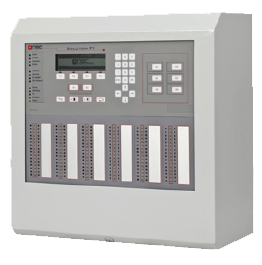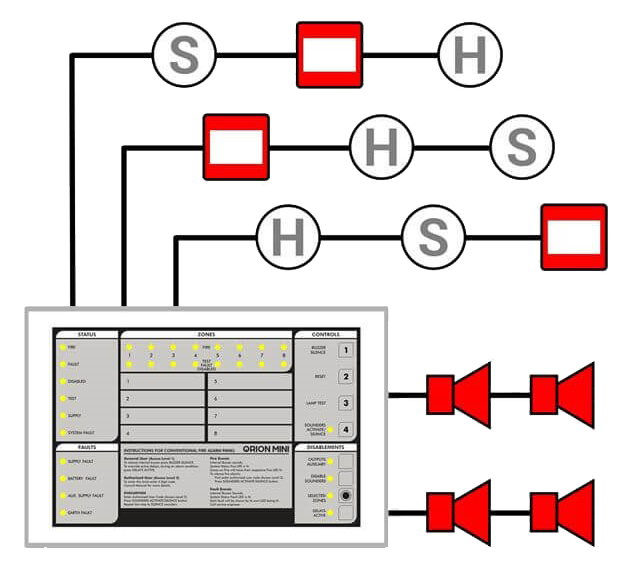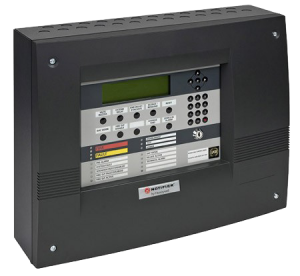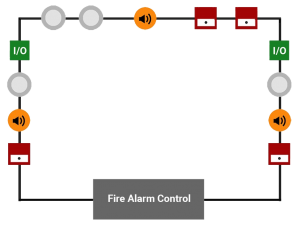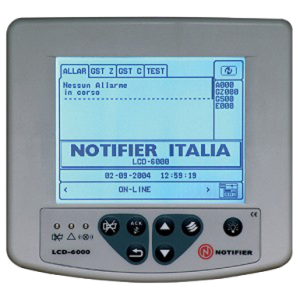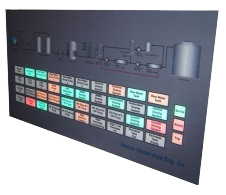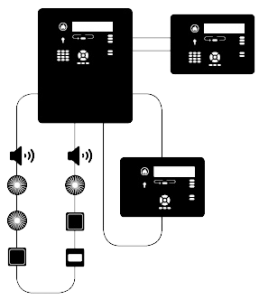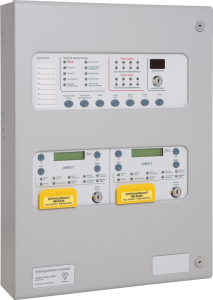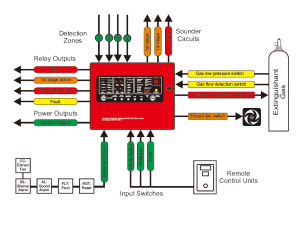
Fire Alarm Control Panel (FACP) monitors and controls all functions of the fire alarm system. It receives input from initiation devices like a manual call point or smoke detector, and controls output for notification devices like a horn or strobe, which notify facility staff and other people in the building that the fire alarm system has detected a fire, smoky condition or system problem. The two most popular recognized technologies are Conventional and Addressable Fire Alarm Control Panel.
Conventional Fire Alarm Control Panel |
|
|
|
Conventional panels are used less frequently in large buildings than in the past, but are not uncommon on smaller projects such as small schools, stores, restaurants, and apartments. A conventional fire alarm control panel employs one or more circuits, connected to initiating devices wired in parallel. These sensors are devised to dramatically decrease the circuit resistance when the environmental influence on any sensor exceeds a predetermined threshold. In a conventional fire alarm system, the information density is limited to the number of such circuits used. |
Addressable Fire Alarm Control Panel |
|
|
|
Addressable panels are usually more advanced than their conventional counterparts, with greater information capacity and control flexibility. Addressable Fire Alarm Control Panel employ one or more Signaling Line Circuits – usually referred to as loops or SLC loops. Depending on the protocol used, a Signaling Line Circuit can monitor and control several hundred devices. Some protocols permit any mix of detectors and input/output modules, while other protocols have 50% of channel capacity restricted to detectors/sensors and 50% restricted to input/output modules. Each device on an SLC has its own address, and so the panel knows the state of each individual device connected to it. |
Special Applications
Fire Alarm Annunciator |
|
|
|
Fire Alarm Annunciator (Remote Annunciator or Repeater Panel) is the component of the fire alarm system that displays the status of the fire alarm system using visible and audible indicators. A fire alarm annunciator is located in an area of the building separate from the FACP. It might also include controls that allow facility staff to reset the fire alarm system and control other functions manually as needed. |
Fire Extinguishing Control Panel |
|
|
|
Fire Extinguishing Control Panel (Fire Fighting Control Panel or Releasing Panel) is capable of using solenoids to disperse fire-fighting chemical agents such as CO2 or water from piping located throughout a building. A releasing panel usually will have a manual abort switch to abort an accidental release which could damage property or equipment. Releasing capability can be part of addressable or conventional panels. |
Applicable Notes
- The fire alarm system, including the remote annunciator, must meet the annunciation requirements specified by
NFPA 72, 1-5.7.3. - To specify other requirements of the Fire alarm Control Panel, related standards such as NFPA 72 or EN54 shall be considered.
Our Services
SISICO is able to offer an extensive range of Fire Alarm Control Panel and Fire Extinguishing Control Panel to suit your specific environment from below mentioned companies:

